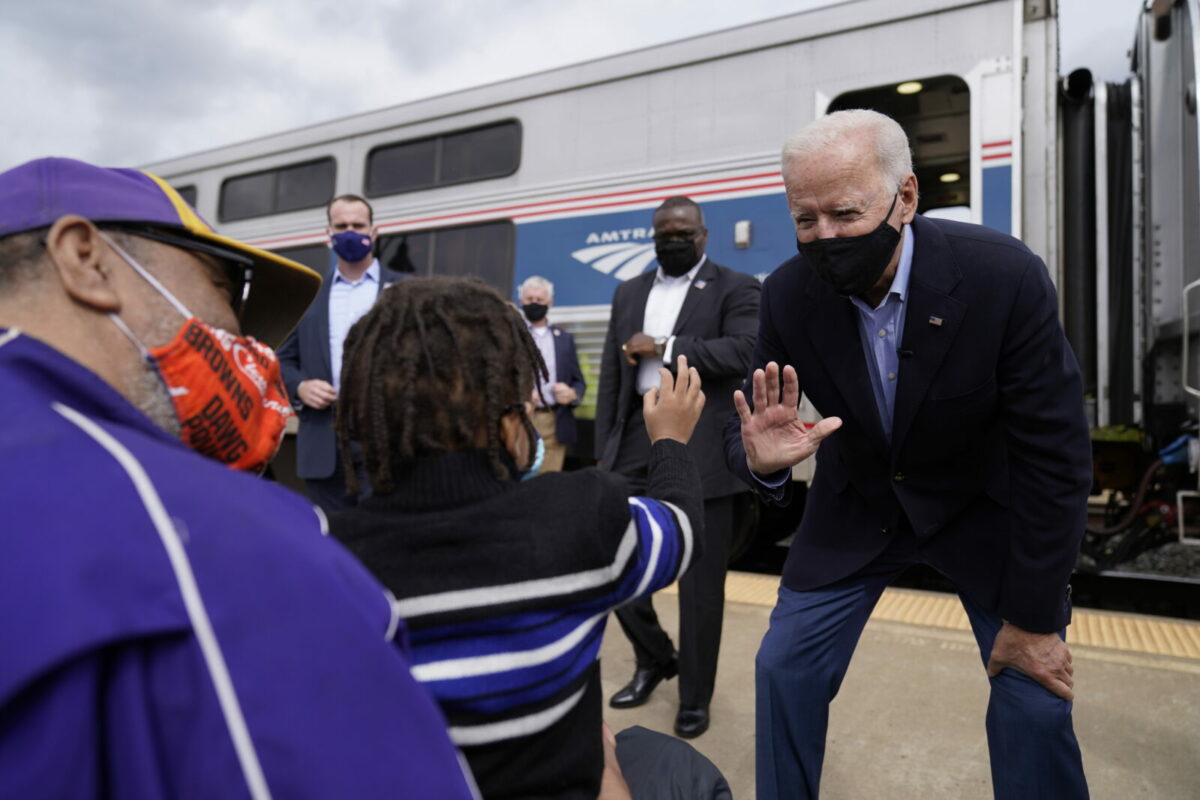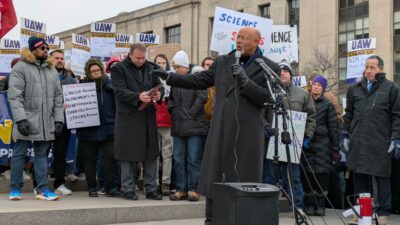Some voters in Western Pennsylvania who are struggling with mail-in and absentee voting, registering to vote, and other election-related issues say they’re finding little help from election offices, which are overburdened with extra work.

In response, state and local officials in this key swing state said, in essence: We’ve got this.
Voters in Allegheny and Fayette counties in the last week reported issues with the state voter registration website, getting calls answered or returned by local election officials, or even getting answers about volunteering as poll workers for the Nov. 3 election.
Those residents reported tips to ProPublica, which covers problems related to voting, through its Electionland project; Postindustrial is one of a coalition of newsrooms across the country investigating those tips.
Deborah Greenstein, a paralegal from Pittsburgh’s South Side neighborhood, said her daughter could not apply for an absentee ballot from the Pennsylvania Department of State’s website; when her daughter tried to upload her signature, it took her “to a dead link.”
Greenstein said she tried helping her several times, by calling the Allegheny County Elections Division, but could not get through.
After several failed attempts, Greenstein and her daughter went to Greenstein’s workplace, printed the application and mailed it in.
“If someone like me who files documents electronically for a living had problems, what makes you think someone who is 75 years old and not technologically savvy can navigate the system?” Greenstein said. “This election is way too important, and this is too much to happen in a battleground state.”
In a prepared statement, the Department of State on Wednesday said that “some users experienced intermittent issues over the past two days with the department’s online voter registration site, and the issue has been fixed.”
Voters can call the Department of State at 1-877-868-3772 to request that a ballot application be sent to them by mail. They can also check the status of their mail-in ballot at votespa.com/mailballotstatus.
More staff have been added to handle calls from voters who have any questions or need information related to voting or the election, according to the department.
State officials say they’re providing counties with $13 million in funding for additional staff, equipment, and other measures to assist with mail ballot volume.
“There’s no way anyone can get in here to manipulate any votes.”
Pennsylvania is among the most important states in this year’s presidential election between Republican President Donald Trump and Democrat Joe Biden. In 2016, Trump carried the Keystone State by less than 1%.
Elections officials in Western Pennsylvania acknowledge delays in returning voters’ calls and understand voters’ frustration at not being able to talk to someone immediately. But, they say, they’re doing the best they can in trying times as their offices are seemingly deluged with requests for mail-in and absentee ballots, as well as new voter registrations.
In Allegheny County, which encompasses the City of Pittsburgh, 332,000 mail-in or absentee ballot requests had been approved as of Wednesday morning, said county Communications Director Amie Downs.
About 201,000 ballots have been delivered to the U.S. Postal Service to be mailed, thus far, she said Wednesday.
Allegheny County sent out 281,000 absentee or mail-in ballots for the primary election in June, and about 13,000 new voters have registered since then, Downs said.

Other counties are experiencing increased requests, too.
One voter on Sept. 24 reported she could not get through to the Fayette County Elections Division, and that the phone kept ringing busy.
In Fayette, about 45 miles south of Pittsburgh, the number of applications for mail-in or absentee ballots has nearly doubled since the June primary, said Larry Blosser, elections director. He said his staff is making progress catching up.
“It’s a lot going on, and there’s only so much you can do,” Blosser said. “People don’t understand. We have six lines, the phones have been ringing non-stop. Someone will get back to you.”
His office is seeing applications online and by mail, and voters coming into the office in person, in addition to civic groups conducting voter registration drives.
The extra work forced him to add more workers — there were six, but he expects to have a total of 14 early this month.
“The misinformation out there is just that — it’s misinformation.”
Armstrong County, about 40 miles northeast of Pittsburgh, also had to bring in extra workers to handle the influx of ballot applications, Elections Director Marybeth Kuznik said.
“We already have surpassed the number we sent out in the primary,” she said.
Callers to her office are greeted with a detailed two-minute message with information on where to apply for mail-in or absentee ballots or to register.
“The phone is ringing off the hook,” Kuznik added. “It’s a great thing that voters are enthused and want to vote. There are a lot of new registrations. I am talking to a lot of people who have not voted in the past years, and now they want to vote. That’s a good thing.”
Like Blosser in Fayette County, Kuznik said her staffers are working long hours and even on weekends.
Despite the heavy workload, they want to assure voters about the integrity of the voting system.
“There’s no way anyone can get in here to manipulate any votes,” Blosser said.
Blosser’s concern is voters will wait until the last minute to apply for mail-in or absentee ballots. Pennsylvania’s deadline for such applications is Oct. 27, a week before the Nov. 3 election.
“It’s going to be really close for them to get their ballot and get it back by that Tuesday,” he said.
Voters can drop off their ballots at their county election offices. Allegheny County also has set up secure drop boxes in three county parks, North, South, and Boyce.

Kuznik stressed there’s no difference between absentee and mail-in voting. “The votes are going to be processed the same way,” she said. “No one can vote twice. By some terrible accident you get two ballots, the system will still take only one vote from a person — when we put the mail-in ballot in, the system tells us that person already has had a ballot counted.
“The misinformation out there is just that — it’s misinformation.”
Greenstein understands the pressures facing local election officials, but remains concerned not everyone who wants to vote will be able to vote.
“I don’t think there’s going to be voter fraud,” she said, “but I am worried about the possibility of people being disenfranchised, not because of incompetence at the elections departments, but because they’re too overwhelmed. I think that’s the biggest risk this election.
“If somebody speaks up and says, ‘Hey, this is what I am experiencing,’ and it can get fixed, it can save some 72-year-old grandmother from being frustrated enough to not vote. Then, I have done my job.”







